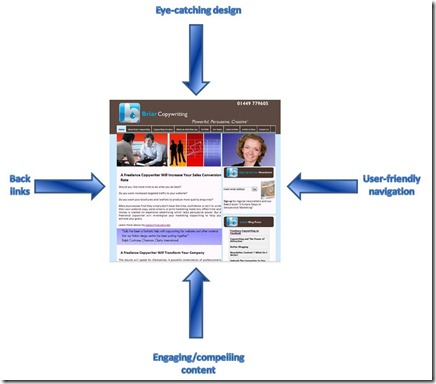I am a search engine optimisation copywriter (that’s just one of the copywriting services I offer) and so have a good idea about what it takes to get your website ranking well in Google. But there’s more to it that a bit of keyword research and great copy.
There are several factors that have to work together if you are going to get great results:
SEO can be a complex subject, especially if you are new to it all. So, I’ve listed below the 5 basics of search engine optimisation.
1. Keyword research
Before you do anything else, research your keywords. These are the terms real people use to search for your product or service. Although you can guess what people use, there’s no substitute for research:
-
analyse your own Google analytics (this is especially if you already have a website that you are looking for give an SEO make-over to) to see what terms people are using to find you.
-
Do some market research – ask your customers how they found you and if it was through a Google search, what term(s) they used.
-
Social networking – see what people are talking about. Engage with them and ask their advice.
-
Look at what your competitors are doing and what keywords they’re targeting.
-
Don’t overlook local (geographic) terms.
Once you’ve done your research and made a list of primary and secondary keywords, don’t just stop there. You will have to test your keywords constantly to ensure you are targeting the phrases and words that will generate you the most traffic.
2. SEO friendly infrastructure
Before you get to the point of building your website or writing your web copy, you must decide which pages will be used for which keywords. Your Home Page will target your primary words/phrase whereas your sub pages will target your secondary phrases.
3. SEO copy
SEO copy isn’t just the copy that appears on your web pages. You must ensure that your Page title tags use the keywords relevant to that page as identified when looking at your infrastructure.
Then there are your META descriptions. Although these don’t have a direct influence on your SEO, they will have an effect on the number of click-throughs you get. The META description is the text that appears below the page title in your search results page:
By using your keywords within that description, you will show the relevance of your page in relation to the search term and therefore increase your chances of getting that all important click-through. If you don’t add a META description, Google will just take a snippet of text from anywhere on your page. Therefore to ensure its relevance, make sure you provide one.
The next place you need to use your keywords is in your headings – these are the H1 and H2 tags (which go all the way down to H6). Again these are prominent locations which will be picked up by Google. Your primary keywords will go in H1 and your secondary ones will go in H2 onwards. Remember though not to just stuff these areas with keywords. They should be there as part of a meaningful phrase or sentence.
Finally, there’s your website copy itself – if you write naturally the keywords will appear within your text. Whatever you do, don’t be tempted to stuff your copy with keywords. The result will be clumsy and unreadable.
4. Build your links
The final aspect of SEO is link building. The more quality and relevant one way links that point to your site, the higher you’ll appear in the search engine results. Building links should be an ongoing process – there is no quick fix for this. You can generate links in a number of ways:
- Write content for other sites and link back through hypertext links (using your keywords)
- List your website in directories
- Comment on blogs in your industry
- Participate in forums (again linking back to your site by using a link in your signature)
- Write guest blog posts for other people
So they are the basics of SEO. Remember you need to look at everything – your website construction and navigation as well as your copy. All elements have to work together if you want to achieve great results. But this isn’t a quick fix. SEO takes time and constant monitoring – but get it right, and the benefits speak for themselves.









0 comments ↓
There are no comments yet...Kick things off by filling out the form below.
Leave a Comment